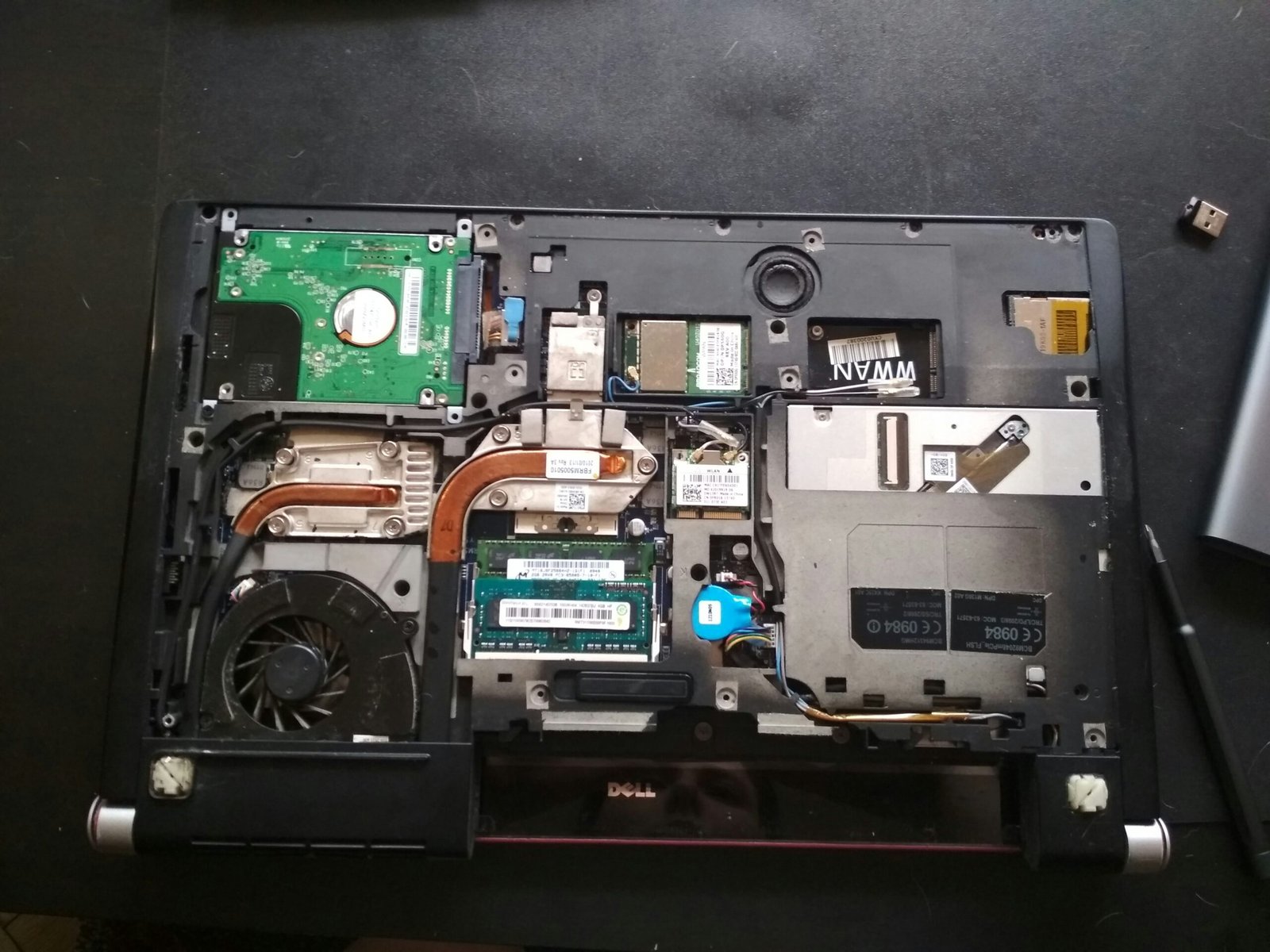
Understanding System Update Issues
System updates are a crucial aspect of maintaining the performance, security, and stability of computer systems and devices. However, users often encounter various problems during the update process. One of the most common issues is software incompatibility, which can occur when new updates do not align with existing applications or hardware on the device. This incompatibility can hinder performance and even render certain applications unusable, leading to user frustration.
Another prevalent issue arises from network connectivity problems. Updates typically require a stable and reliable internet connection for successful download and installation. Users may experience interrupted downloads or failed installations due to unstable Wi-Fi connections or bandwidth limitations. In severe cases, network issues can prevent access to critical updates altogether, leaving devices vulnerable to security threats and performance lag.
Installation errors represent yet another significant barrier to smooth system updates. These errors can manifest in various forms, ranging from error codes to incomplete installations. Users might face scenarios where the update process starts but then halts unexpectedly, which may cause confusion and anxiety about the potential consequences for their device. Often, these installation issues can stem from insufficient disk space, incorrect system configurations, or even corrupted update files.
The potential impact of these system update problems extends beyond mere inconvenience. Performance issues, such as sluggish operation and crashes, can become more prevalent when devices are not updated correctly. Furthermore, failing to resolve update issues can pose serious security risks, as critical security patches may be left uninstalled, exposing users to vulnerabilities. Recognizing these common system update problems helps users take proactive steps toward maintaining their devices, ensuring they remain secure and functional.
Identifying Symptoms of Update Problems
When a system update does not go as planned, the consequences can manifest through a variety of symptoms, making it essential for users to identify them promptly. One common indication of update problems is frequent crashes or unexpected system restarts. If your computer or device begins to shut down or reboot without warning after an update, this is a significant alert that something may have gone awry during the installation process.
Another symptom to be mindful of is a noticeable decline in performance. Users may experience sluggishness, with applications taking longer to load or responding slowly. When a system shows these signs post-update, it may indicate that the latest version is incompatible with existing hardware or software. Additionally, users may encounter error messages during or after the update procedure. These messages may range from minor notifications to critical warnings that prevent normal operation, thus highlighting potential risks associated with the proposed update.
Furthermore, problems accessing certain features or functionalities can arise after an update. Features that once operated seamlessly may become inaccessible or behave erratically. This could involve issues such as missing drivers, incomplete installations, or removed applications. Observing such irregularities post-update is crucial for diagnosing the underlying problems. Users are encouraged to take notes of any specific error codes or messages, as they provide vital information that aids in troubleshooting.
As you begin to notice these symptoms, it becomes imperative to assess the situation thoroughly. Understanding the nature of these update-related problems will serve as a foundation for implementing appropriate solutions and restoring system functionality. By being vigilant and proactive in recognizing these symptoms, users can navigate the complexities of system updates more effectively.
Preliminary Troubleshooting Steps
When faced with system update problems, it is prudent to start with some preliminary troubleshooting steps before delving into more complex solutions. These basic checks can often resolve minor issues that prevent successful updates. The first step is to ensure that your device is connected to a stable internet connection. An unstable or slow internet connection can impede the download and installation of necessary update files, resulting in errors. Confirm that your Wi-Fi or Ethernet connection is functioning properly, and if possible, run a speed test to verify bandwidth stability.
Next, you should assess the available disk space on your device. Insufficient storage can lead to update failures, as most updates require a certain amount of space to download and install. It is advisable to free up disk space by removing unnecessary files or applications. Look for large files such as videos or downloads that can be temporarily relocated to an external drive or cloud storage. If disk space is a recurring problem, consider implementing a regular maintenance routine to keep your storage optimized.
Additionally, check whether your device is operating on the latest software version prior to the attempted update. Manufacturers frequently release patches and updates that improve device performance and patch vulnerabilities. By ensuring your system is updated to the most current version before attempting further updates, you might prevent conflicts that could arise from having outdated software. It is important to navigate to your device’s settings and check for any available updates that need to be installed.
By following these preliminary troubleshooting steps, users can often resolve the initial issues that might be hindering their system updates, paving the way for a smoother update process.
How to Repair Update Errors
Update errors can be frustrating and may hinder the performance of your system. Fortunately, there are several effective methods to repair these errors and restore the functionality of your updates. Below, we outline specific steps you can take to resolve update issues systematically.
One of the primary tools available for diagnosing and fixing update problems is the built-in Windows Troubleshooter. To access this tool, navigate to the Settings menu and select “Update & Security.” From there, click on “Troubleshoot,” then choose “Additional troubleshooters.” Locate the “Windows Update” option and follow the prompts to allow the system to automatically detect and resolve common issues related to updates.
If the troubleshooter does not resolve the error, checking for corrupted files may be necessary. You can use the System File Checker (SFC) tool for this purpose. Open the Command Prompt as an administrator, then type the command sfc /scannow and press Enter. This process scans system files for integrity issues and automatically repairs any corrupt files it encounters. Once the scan is complete, restart your computer and attempt to update again.
In some cases, you may need to reinstall the problematic updates manually. To do this, visit the Microsoft Update Catalog website and search for the specific update code. Download the update and run the installer. Ensure that you follow all instructions during the installation process. If the update still fails after reinstallation, consider reviewing your system configurations to rule out any conflicting software or drivers.
By employing these methods, users can effectively repair update errors and ensure their system remains up to date and secure. Each step provides a systematic approach to addressing update-related issues that may arise during regular operation.
Using Safe Mode for Troubleshooting
Safe Mode is a diagnostic startup mode designed to help users troubleshoot problems with their operating systems. When running in Safe Mode, the system is loaded with minimal drivers and services, allowing users to identify issues caused by conflicting software or faulty drivers. This environment can be particularly beneficial when encountering system update problems.
To access Safe Mode on a Windows system, one can follow these steps: First, restart the computer and, during the boot process, repeatedly press the F8 key before the Windows logo appears. This action brings up the Advanced Boot Options menu, where users can select “Safe Mode” or “Safe Mode with Networking” if internet access is needed. For Windows 10 and later versions, the process involves going to Settings, selecting “Update & Security,” and clicking on “Recovery.” From here, users should choose “Restart now” under the Advanced startup section, then navigate to Troubleshoot > Advanced options > Startup Settings, and click on “Restart.” Upon reboot, selecting “4” or “F4” will launch the system in Safe Mode.
For macOS users, entering Safe Mode requires holding the Shift key while the system boots up. This action limits the functionalities to essential components and can assist in troubleshooting update issues. It is important to note that, in Safe Mode, third-party software is generally disabled, thus confirming whether the updates were hindered by applications or drivers that are not part of the core operating system.
By isolating the operating system from extraneous processes, users can determine if software conflicts or corrupted drivers are the root cause of their update problems. Conducting critical tasks, such as uninstalling problematic applications or rolling back recent driver updates in Safe Mode, is a strategic approach to resolve complications before returning to normal operation. This ensures a smoother and more efficient troubleshooting process.
Reverting to Previous Update Versions
When a recent system update leads to unexpected issues, reverting to a previous version may be the most effective solution for users seeking stability. This process, while generally straightforward, varies across different platforms such as Windows, macOS, and Linux. Below, we provide comprehensive step-by-step instructions for each of these systems.
For Windows users, achieving a rollback is initiated by accessing the Settings menu. Begin by clicking on the ‘Start’ menu, then selecting ‘Settings.’ Within this menu, navigate to ‘Update & Security’ and click on ‘Windows Update.’ If the problematic update was recent, you will find an option labeled ‘View update history’ where you can access ‘Uninstall updates.’ Select the update that caused the trouble and click ‘Uninstall.’ This should return your system to a previous state, restoring stability while preserving personal data.
macOS users can also revert updates, although the available methods can differ based on the specific issue. To remove an update, users can go to the ‘Apple Menu’ and select ‘System Preferences’ followed by ‘Software Update.’ Here, you may find an option to manage your updates. In some cases, it might be necessary to utilize Time Machine, Apple’s built-in backup feature, to restore your system to a point prior to the problematic update. This method safeguards your files, ensuring that important data remains intact.
For Linux users, the process usually involves using package managers. Users can access the terminal and execute specific commands depending on their distribution. For instance, Ubuntu users can revert packages by accessing the ‘dpkg’ or ‘apt’ commands to downgrade the system to a prior version. This method often requires some familiarity with command-line operations but is equally effective in restoring system stability.
Regardless of the platform, reverting to a previous version can provide a practical solution to system update problems, allowing users to regain stability without compromising their valuable data.
Updating Drivers and Software Components
One common cause of system update problems is the presence of outdated drivers and software components. These essential components enable hardware devices to communicate effectively with the operating system. When they become outdated or incompatible due to changes in the system, it can lead to conflicts that hinder successful updates. Therefore, it is vital to regularly check for and update these drivers and components to maintain system stability and performance.
To start, you can use built-in tools available in most operating systems. For users of Windows, the Device Manager is a reliable method for viewing and updating drivers. Accessing Device Manager can be achieved by right-clicking the Start button and selecting it from the menu. From there, you can expand categories such as ‘Display Adapters’ and ‘Network Adapters’ to quickly locate devices that may require updates. Right-click on a device and select ‘Update Driver’ to initiate the search for the latest compatible version.
Additionally, many manufacturers provide their own software utilities designed for driver updates. For instance, NVIDIA and AMD have dedicated applications that can streamline the process of updating graphics drivers. These tools often include features that check for the latest software versions compatible with your hardware, making the update process simpler and more efficient.
It’s equally important to ensure that other software components, such as system libraries and applications, are up to date. Most systems offer an automatic update feature that can manage software updates in the background. Enabling this feature can alleviate the manual effort involved in maintaining the latest versions and further prevent potential update-related issues.
Regularly updating drivers and software components is a proactive strategy that contributes to a smoother experience with system updates, ensuring compatibility and reliability in your overall computing environment.
Seeking Professional Help
While many system update problems can be addressed independently through troubleshooting and online guidelines, some issues may prove too complex to resolve on your own. In such cases, it is crucial to recognize when to seek professional assistance. A proactive approach can save time and prevent further complications that might arise from inadequate solutions. Understanding your options for professional help is essential for efficiently resolving software-related challenges.
One of the first steps to consider when facing persistent update issues is contacting customer support. Most software and hardware providers offer dedicated support services to assist users with technical problems. When reaching out, it is advisable to provide detailed information regarding the issues encountered, including error messages, update histories, and previous actions taken to rectify the problem. This information will enable support representatives to offer tailored advice or escalate the issue as necessary.
Another option is visiting authorized service centers, particularly for hardware-related concerns accompanying software updates. Technicians at these centers are equipped with advanced tools and technical knowledge to diagnose and fix system problems efficiently. Before visiting, ensure that you have the warranty status and any relevant documentation to assist in the repair process.
Additionally, utilizing online resources can be beneficial for more technical issues that are not immediately solvable through customer support. Various forums, official websites, and instructional videos provide insights into common problems and solutions. Engaging with other users who have experienced similar challenges can vastly improve your understanding and potentially guide you to an effective resolution.
In conclusion, when faced with complex system update problems, it is essential to recognize the value of professional help. By utilizing customer support, authorized service centers, and online resources, you can ensure a thorough and efficient resolution to your issues.
Preventative Measures for Future Updates
To minimize the occurrence of system update problems in the future, it is imperative to adopt a proactive approach regarding device maintenance and update management. By implementing a series of best practices, users can enhance their likelihood of a seamless update experience while also safeguarding their data.
One primary recommendation is to enable automatic updates. Most operating systems offer an option to automatically download and install updates as they become available. Activating this feature not only ensures that the device runs the latest software but also reduces the risk of experiencing issues that can arise from outdated systems. Regular updates often contain critical security patches and bug fixes that improve system stability and functionality.
In addition to automatic updates, users should engage in regular device maintenance. This practice includes cleaning up system files, uninstalling unused applications, and updating drivers. Routine checks help to ensure that the device operates smoothly and is less prone to errors that may complicate future updates. A well-maintained device is significantly less likely to encounter compatibility issues or performance slowdowns during the update process.
Utilizing backup solutions is another crucial preventative tactic. Before initiating any system updates, users should create backups of important files and system settings. This step can safeguard against potential data loss and provide an easy recovery option if the update does result in unforeseen issues. Various backup tools are available, ranging from cloud-based solutions to external storage devices, allowing users to select an option that best suits their needs.
In conclusion, by enabling automatic updates, practicing regular maintenance, and utilizing effective backup solutions, users can significantly reduce the risk of experiencing system update problems in the future. Adopting these strategies will help ensure an overall smoother and more reliable update experience.








